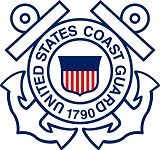


- Date: 6 p.m. Monday, April 20, 2020
2020 Valdez Marine Terminal Admin Sump Incident
2020 VMT Admin Sump Incident Fact Sheet 14
- As of 1:30 p.m. Monday, approximately 798 barrels (33,516 gallons) of water/oil mix has been collected from recovery activities on the water. Crews are measuring and analyzing the composition of the collected liquids, a process known as metering.
- Crews have metered approximately three-quarters of those collected emulsified liquids.
- From those collected volumes metered so far, approximately 12 barrels (511 gallons) of oil was recovered.
- In addition, 30 gallons of oil have been recovered from land to date.
- Metering work continues and the exact volume of oil spilled remains undetermined.
- Skimmers continue making progress and overflights confirm that the impacted area is decreasing and the booming footprint is shrinking.
- Collection rates are starting to reflect the decline in contaminated fluid that is entering Port Valdez since the point of origin was secured.
- In addition, skimmers which are more efficient and collect less water were deployed late last week.
- This area has been boomed since April 12 and boom has contained the spill.
- "The declining volume of collected liquids, along with gradual shrinking of the affected area, tells us we’re making progress," said Commander Mike Franklin, Federal On-Scene Coordinator and United States Coast Guard representative in the Unified Command. "The response work couldn’t be carried out without the support from trained members of the community who are assisting through the Vessel of Opportunity program."
- The source of the spill was identified as a concrete sump collection well, identified as 58-SU-3, and was isolated and secured on April 13. It is located west of the Emergency Response Building (ERB) at the Valdez Marine Terminal (VMT), about a quarter-mile uphill from the VMT small boat harbor.
- This sump is 4 feet by 4 feet, and 16 feet, 6 inches deep.
- The sump collects rainwater from the containment area for nearby diesel fuel tanks, water from ERB floor drains, and other industrial runoff from nearby areas.
- The sump routes these liquids through piping to the Ballast Water Treatment (BWT) facility for further processing.
- The oily water found in the harbor is not consistent with the runoff usually collected by the sump.
- Maintenance crews found debris in the check valve that prevented it from closing fully. This could have allowed oily water from the ballast water system to backflow into the sump.
- Crews are investigating what other liquids could have back flowed into the sump.
- Personnel are investigating the incident, including the origin of the oily water, as well as the sump’s components.
- Crews continue excavation and investigation of the flow path and primary entry point where oily water is making its way into Port Valdez in the vicinity of the VMT small boat harbor. This is a rocky area near the low tide line, which indicates a flow path below ground.
- Snow removal crews have cleared an area of interest near the Oil Spill Response Building and investigation continues in the area.
- Crews continue to excavate uphill from the building to create a potential collection point and prevent more oily water from entering the area of the VMT small boat harbor.
- Excavation is also taking place at other areas on Terminal, including around the sump that was the source of the spill.
- Testing of critical system piping in the area was completed through the weekend; all piping passed pressure testing and verification of its integrity. There are no other leaks in the area.
- More than 230 people are involved in the response, locally and around the state.
- 15 Vessel of Opportunity boats are on scene; 13 Alyeska work boats are also on scene, including landing craft, inflatables, river boats and others.
- More than 26,000 feet of boom is deployed. Response crews continue monitoring and maintaining boom systems.
- TAPS operations are not impacted, and tanker loading has continued as scheduled.
- For the safety of response personnel and the public, a Temporary Flight Restriction area remains in place, set at 5,000 feet elevation and one mile in radius over the VMT working area.
For information and updates on the response, check back to this ADEC site.

 Indicates an external site.
Indicates an external site.